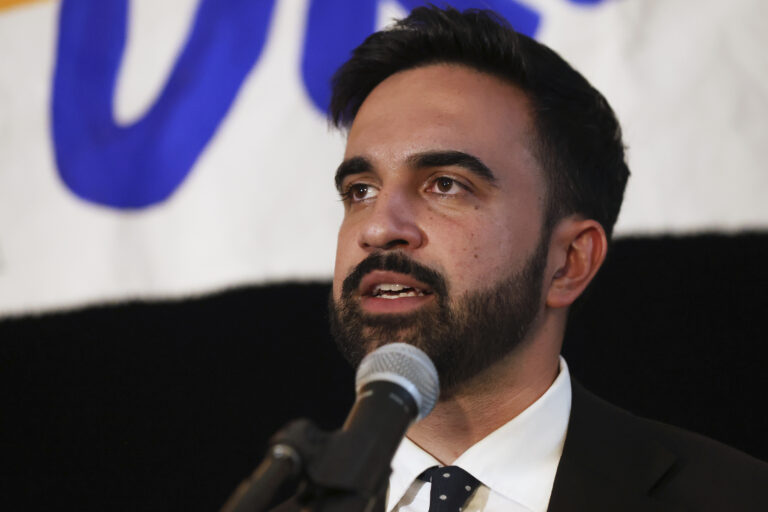 Republicans swept into governorships on a tea-party fueled wave of discontent four years ago, taking over statehouses long governed by Democrats with promises of conservative economic and social policy makeovers.
Republicans swept into governorships on a tea-party fueled wave of discontent four years ago, taking over statehouses long governed by Democrats with promises of conservative economic and social policy makeovers.
In states across the Midwest and Southwest, GOP governors followed through on those promises, winning far-reaching changes in labor, budget and social policy. Now, those same governors are preparing to face the voters next year, promoting their accomplishments while keeping arm’s length from their unpopular colleagues in Congress.
Democrats are counting on a backlash from voters upset over the policy shift to the political right. But they have struggled to field top-tier contenders in several key states, including some that President Barack Obama carried last year when he won re-election. Democrats attribute their candidate recruitment woes to the continuing popularity of Republican governors, despite disapproval of the congressional GOP after the federal government shutdown in October.
“While the federal party is suffering, it’s much harder to pin that on candidates for statewide office,” acknowledged Nathan Daschle, former director of the Democratic Governors Association.
Republicans control 29 of the nation’s 50 governorships, including 20 of the 36 that will be on the ballot in 2014. GOP-controlled states include Iowa, Michigan, Nevada, New Mexico, Ohio and Wisconsin, which together accounted for roughly half of Obama’s 126-electoral vote margin over GOP presidential nominee Mitt Romney.
But in Nevada and New Mexico, Democrats have all but conceded that Republican Govs. Brian Sandoval and Susana Martinez will win re-election, even though both states have booming Hispanic populations that overwhelmingly went for Obama in 2012. In the Midwest, Democrats so far have fielded only little-known challengers to Govs. John Kasich of Ohio, Rick Snyder of Michigan and Scott Walker of Wisconsin, despite large Democratic-leaning union constituencies upset over the anti-labor policies of all three governors.
To be sure, the GOP has its worries.
Despite gradually falling unemployment in his state, Pennsylvania Gov. Tom Corbett has been dogged by criticism of his handling of the Penn State University football program’s sex abuse case during his time as state attorney general. Similarly in Florida, Gov. Rick Scott has struggled to connect with voters, despite the state’s improving employment picture.
Still, Republicans also see opportunities in several Democratic strongholds.
Wealthy Republican outsider Bruce Rauner hopes to face Illinois Democratic Gov. Pat Quinn, who has been hounded by high unemployment and soaring pension debt. Similarly, businessman Tom Foley, who lost narrowly to Connecticut Democrat Dan Malloy in 2010, is challenging Malloy again, as the incumbent faces problems similar to those confronting Quinn.
“Some of our incumbents are vulnerable,” said Danny Kanner, spokesman for the Democratic Governors Association. “But our job is to simply increase our numbers, and I’m confident we’ll do that.”
Kanner says Democrats see opportunities against Republican Govs. Nikki Haley in South Carolina and Sam Brownback in Kansas. In Texas, state Sen. Wendy Davis, who rose to prominence earlier this year with a filibuster over abortion restrictions, has proven to be a robust fundraiser in the early months of her campaign to replace retiring GOP Gov. Rick Perry.
But all three states are traditional GOP strongholds, where Republican voters usually turn out disproportionately in midterm elections, especially during a Democratic president’s second term.
The shortage of competitive governors’ races underscores the nation’s political divide. Of the 29 states with Republican governors, 23 have Republican controlled legislatures, mostly in the Midwest, West and South. Of the 21 Democratic governors, including Democratic-leaning independent Lincoln Chafee of Rhode Island, 14 have Democratic-controlled legislatures, mostly on the West and East coasts.
“We have a lot more governors, who can point to successes,” said Nick Ayers, a former director of the Republican Governors Association.
Democratic strategists acknowledge that GOP governors have been more successful in using their offices as national policy laboratories. Kasich, Snyder and Walker — aided by GOP-controlled legislatures — enacted sharp curbs on public employee unions during the past four years, and Rauner is campaigning on a similar platform in Illinois.
Democratic strategist Tad Devine said his party needs to look beyond its shrinking union base for new blood.
“We need new, younger high-tech Democrats who have not come up through the typical political farm system, are conversant in the new economy and can talk to blue-collar voters,” he said. An example is Mary Burke, a former executive for Trek Bicycles, who is the only announced Democratic challenger to Walker in Wisconsin.
Republican gubernatorial candidates are also likely to have a financial edge.
The Republican Governors Association expects to report at least $45 million in campaign cash by year’s end, and could have more than $50 million by the time New Jersey Gov. Chris Christie wraps up his first fundraising tour as the group’s incoming chairman this month.
The Democratic Governors Association wouldn’t put a number on its year-end fundraising expectations. “We will be outspent,” conceded DGA spokesman Kanner, while adding that fundraising by the two governors associations has rarely been an indicator of election outcomes.
(AP)










